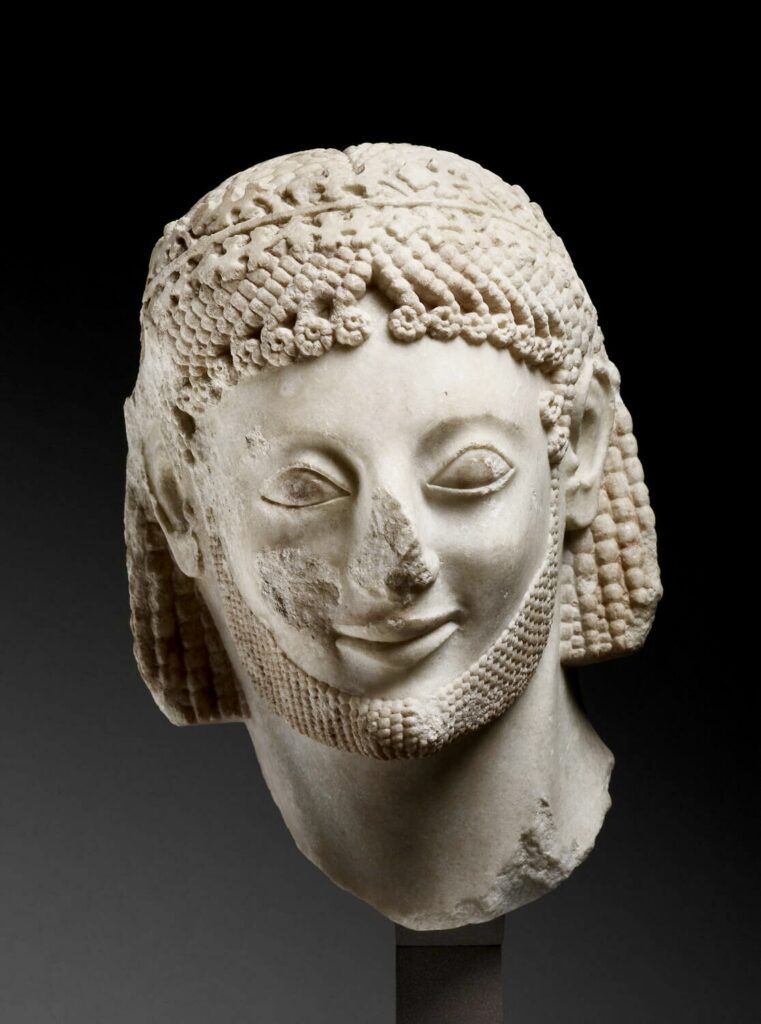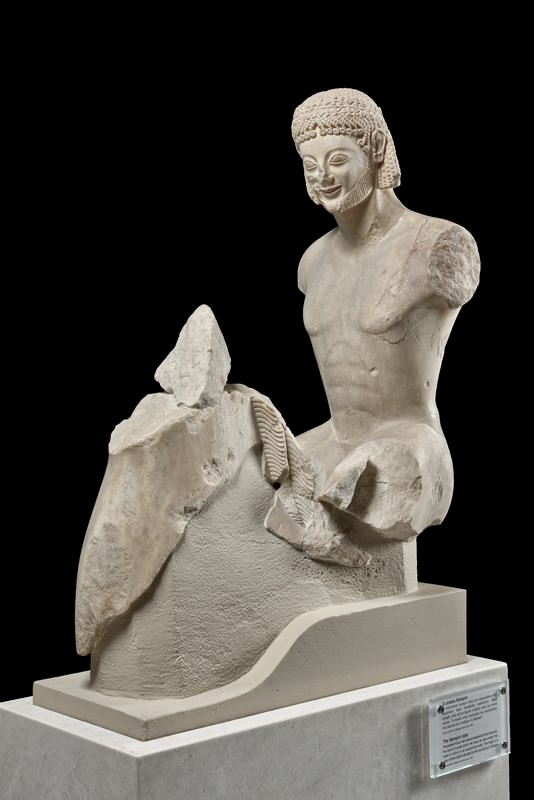While sharing many characteristics with his archaic kin, the so-called ‘Rampin rider’ is on the whole far more lively with a beguiling dip and tilt to the head, extraordinary plaits and trimmed beard, amused doe-eyed expression, and small asymmetries throughout.


The head was found on the Akropolis in 1877 and was later donated to the French state by Monsieur Rampin (hence the name), with the mounted body of a horseman and parts of his steed found a decade earlier. No association between the parts were definitively made until the 1930’s. (The composite of the elements using plaster casts is shown in the second photo). And it is little wonder it took decades to associate them, as the sculptor (a true innovator for 550 B.C.) joined the unrelentingly frontal and rigid thorax with the slightly turned head to unlikely but great effect.
Whether or not the head can be considered a portrait (of an athletic victor or Athenian aristocrat) or instead is one of the mythological Dioskouroi (as has been proposed), it is a reminder of the archaeological treasure trove of the Akropolis’ debris deposits (Perserschutt!) – and how that chaotic jumble could become a veritable pikilia of fragments spread far and wide in the 19th century.




